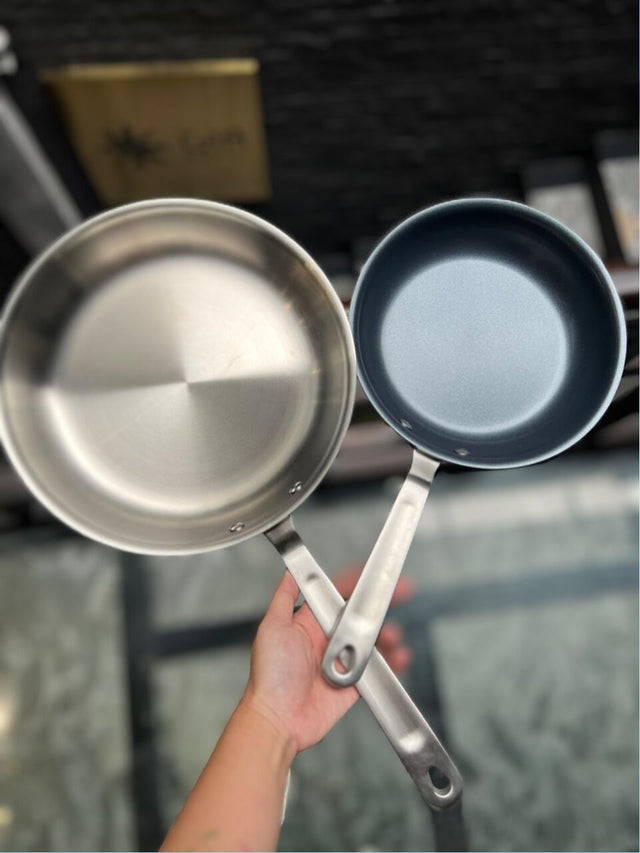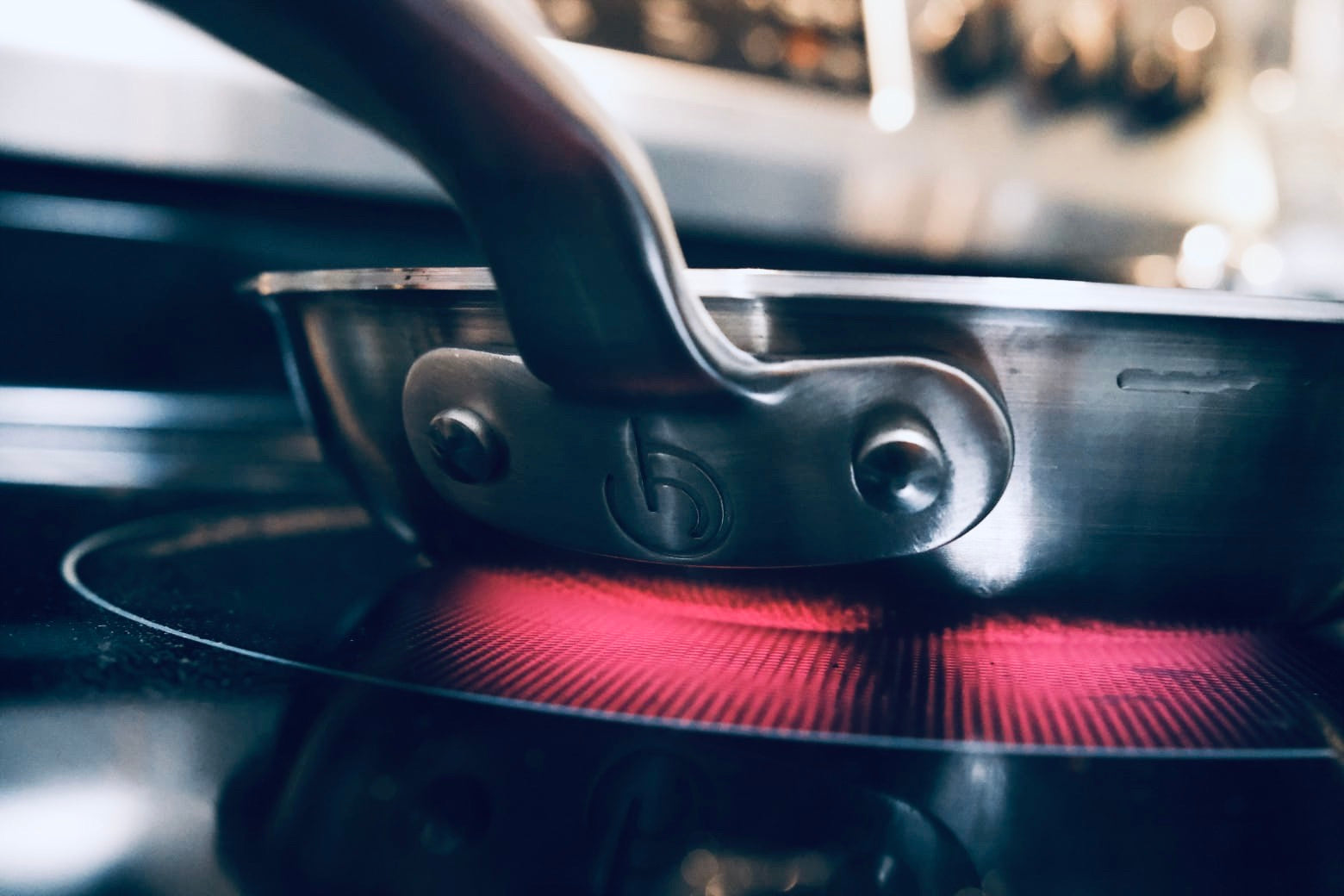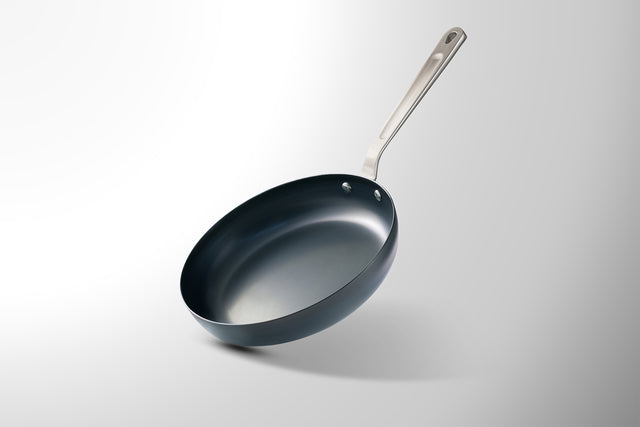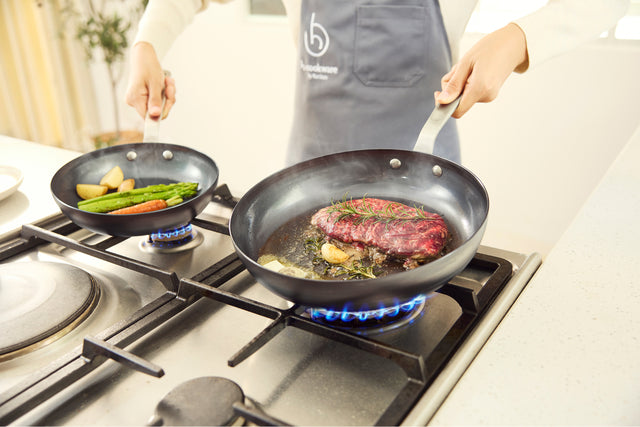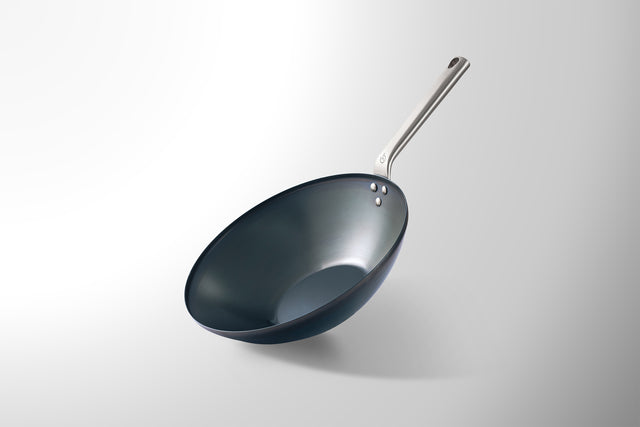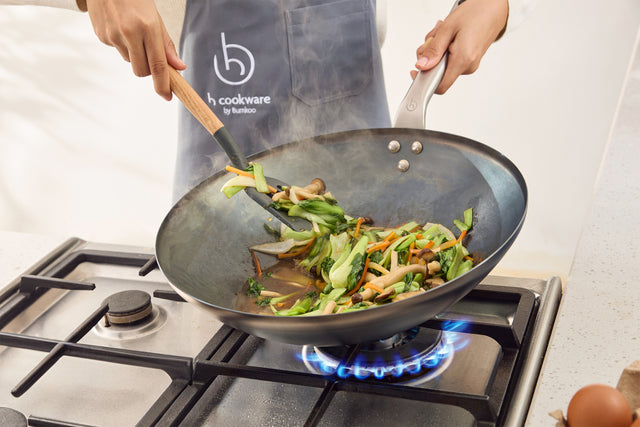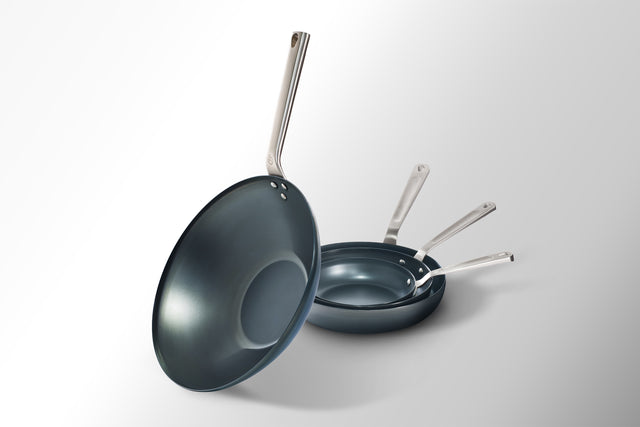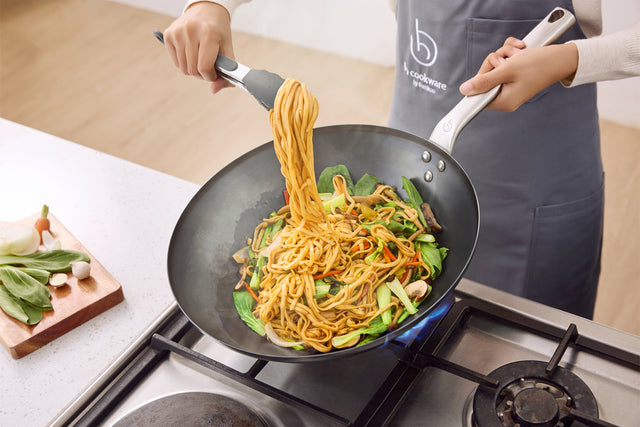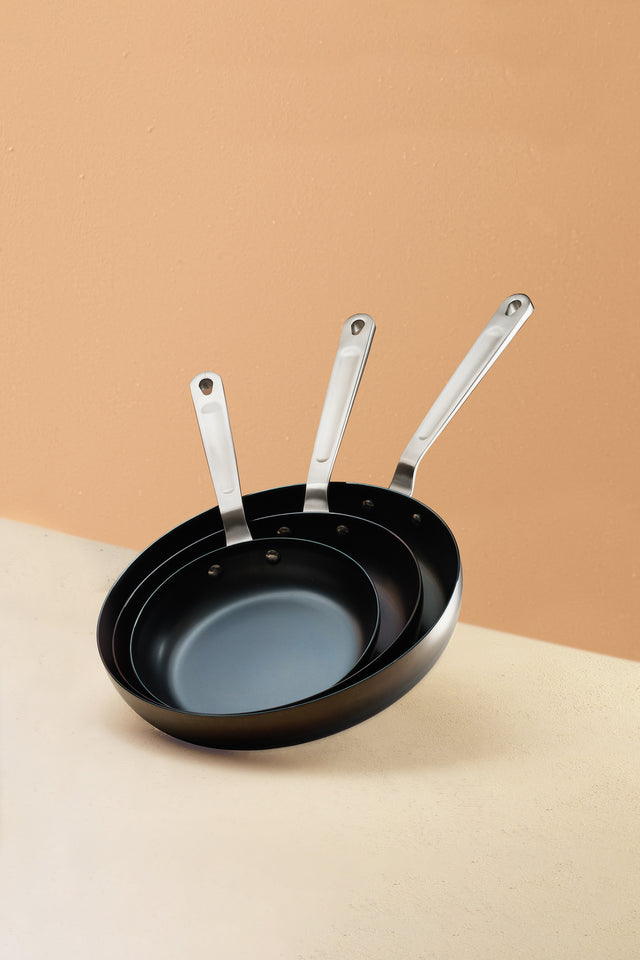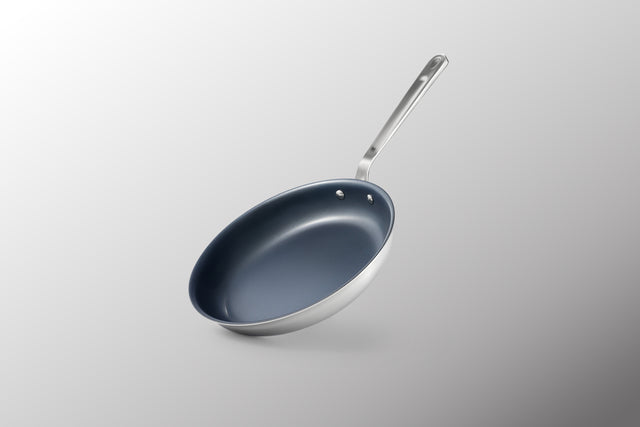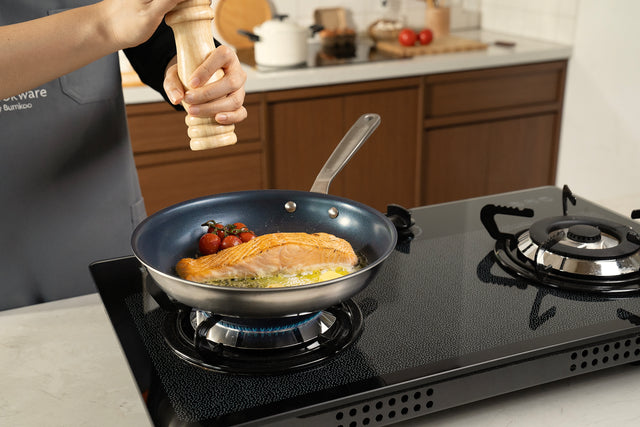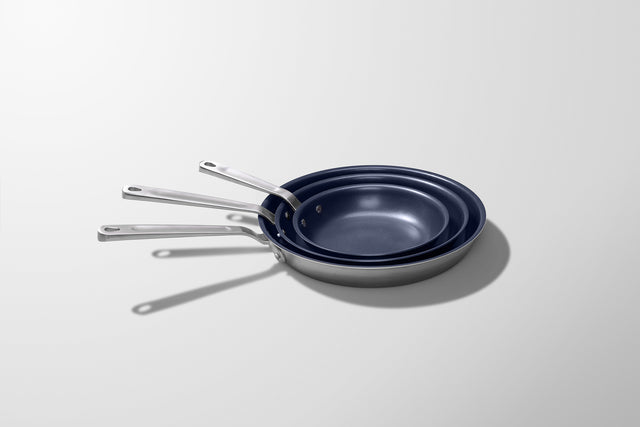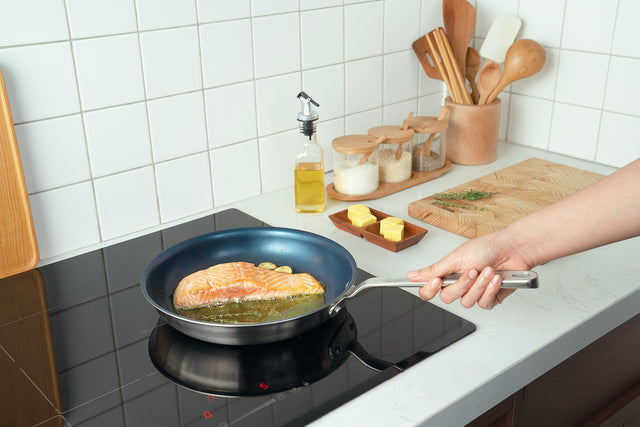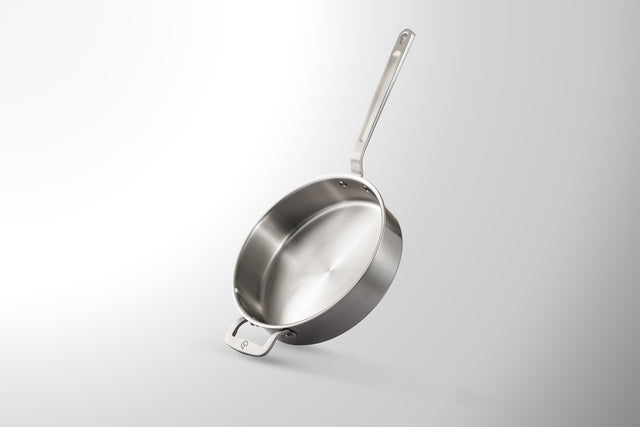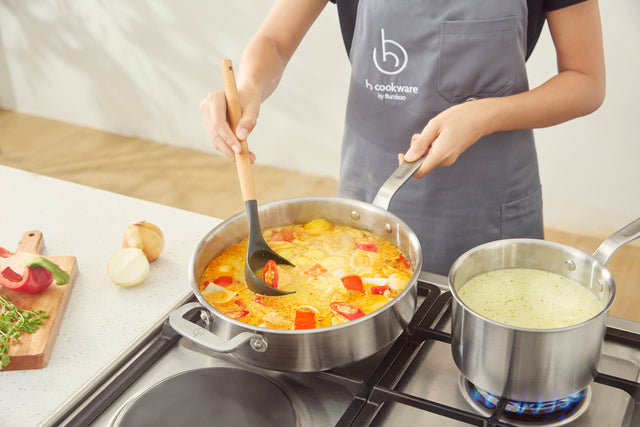Stainless steel clad heats evenly and efficiently, so higher heat is only needed to sear and boil liquids.
Step 1: Check food temperature
Make sure your food and ingredients are at room temperature before you cook. Cold foods tend to stick to a hot pan. And it helps evenly cook proteins when starting at room temperature.
Step 2: Pre-Heat
Pre-heat your pan over medium-low heat to help minimize food-sticking issues. If you add cooking oil from the beginning when the stainless steel pan is not hot enough, it will slow down the release of steam from the food and cause stickiness on the surface. If you add oil when the stainless steel pan is too hot, it is easy to see the oil burn and stick to the surface of the pan.
Step 3: Water Dance
Add a drop or two of water to your pan and if they dance on the surface, the pan is ready to use at medium-low heat. If your pan is not hot enough, the water will bubble and evaporate. If it is too hot, the water will split into smaller drops and move around the pan quickly.
Step 4: Add fat
First determine what food to cook and at what temperature. For low heat items, you can use butter. For food that requires medium-to-low heat, then you can use olive oil. For medium-to-high heat, then you can use a vegetable or grape seed oil.
Find similar articles:
TechniqueMore stories
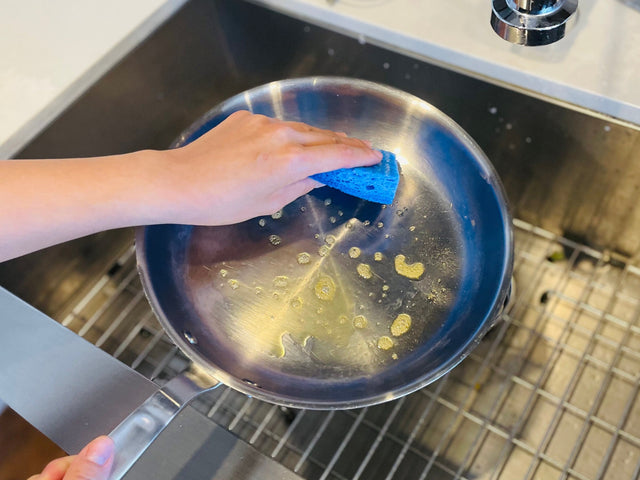
Care Instruction for Stainless Clad
